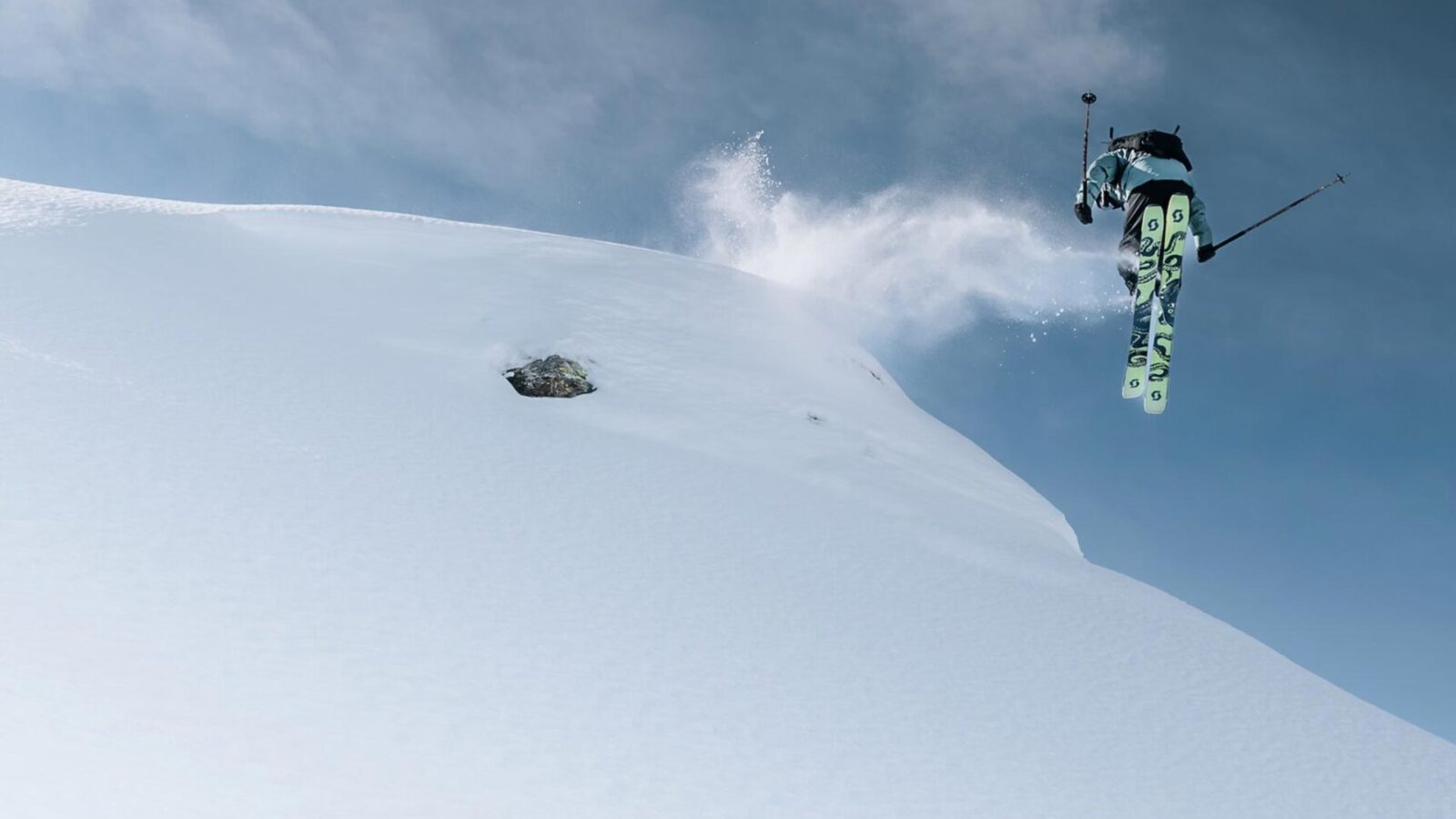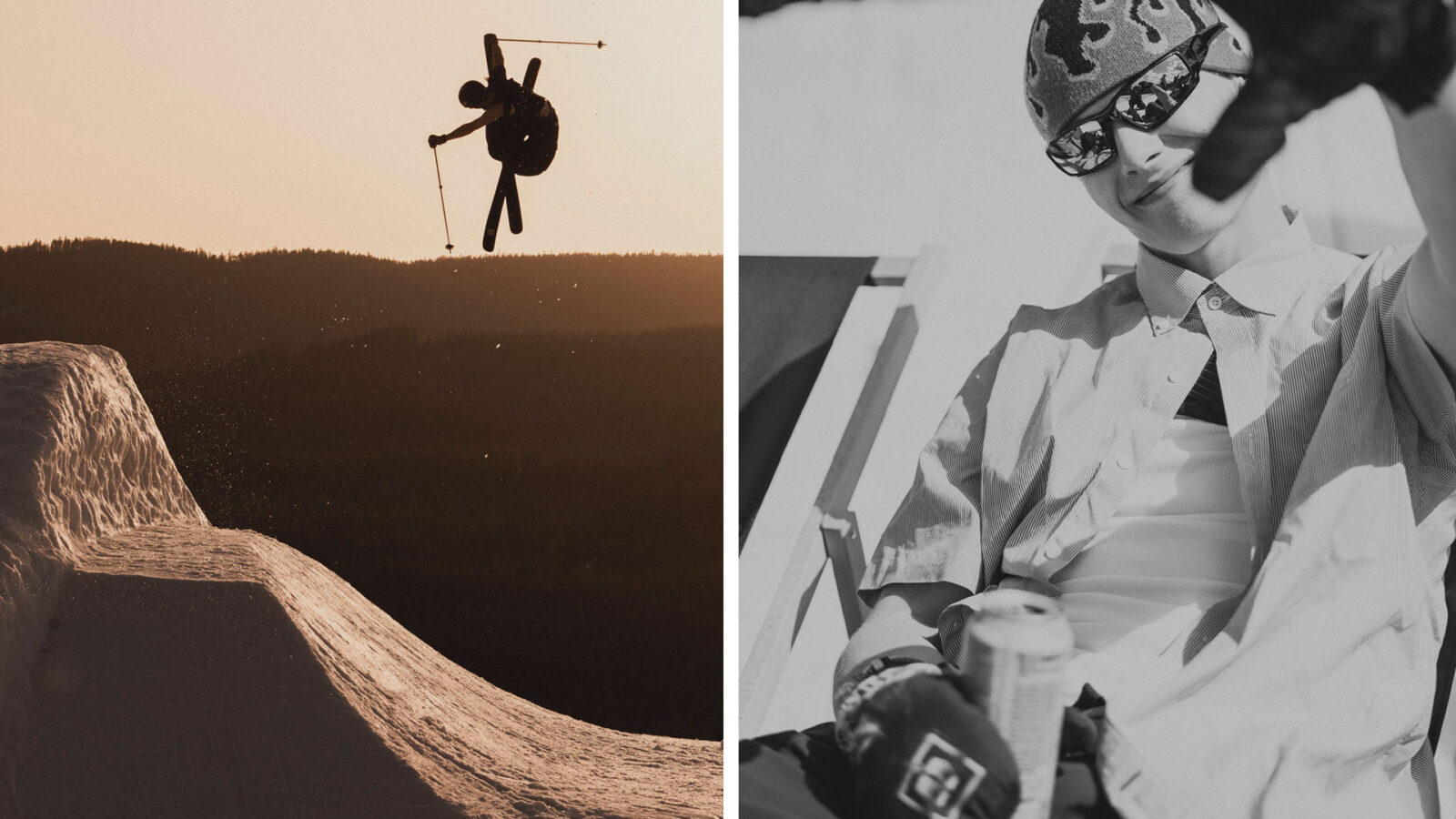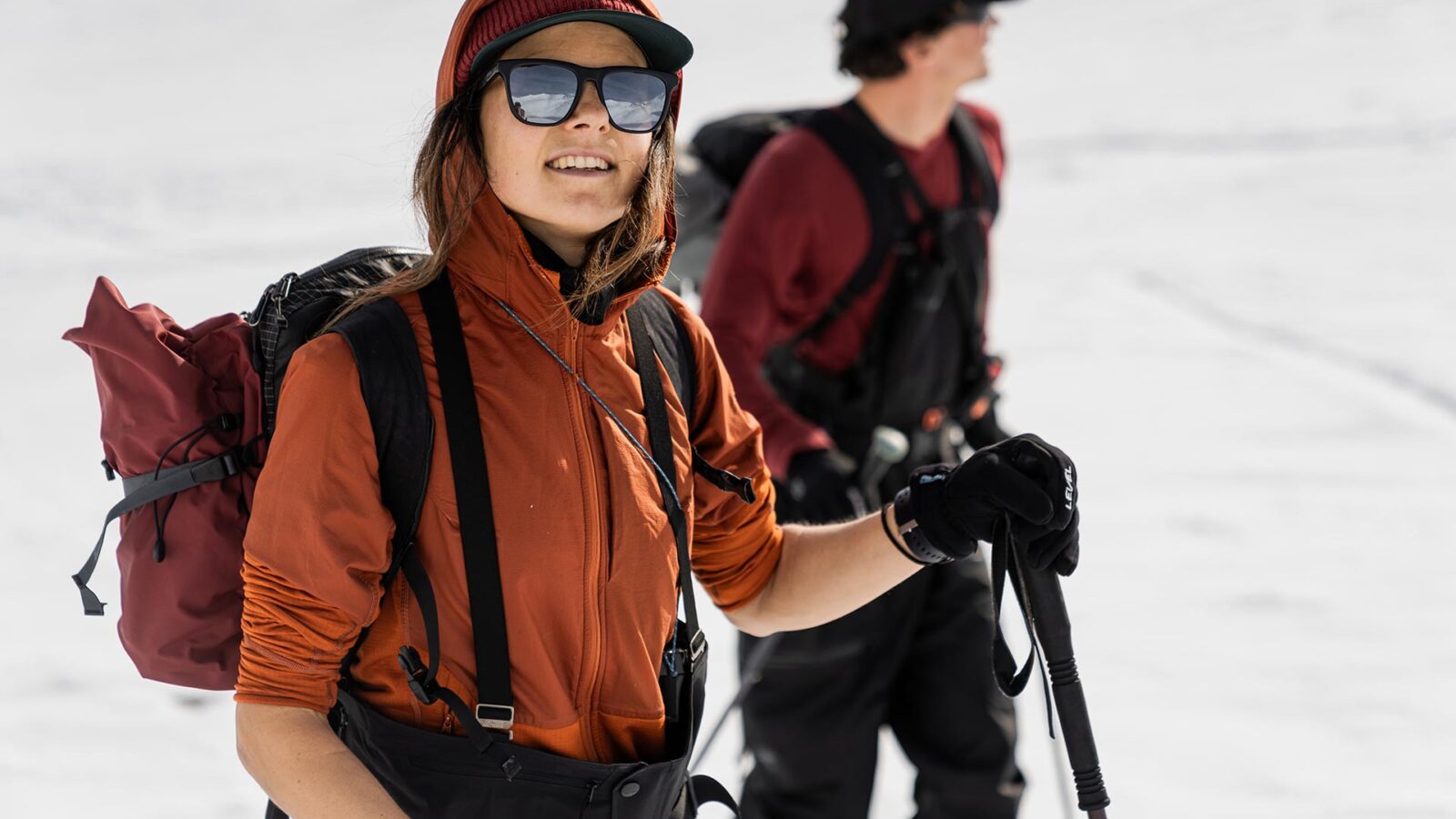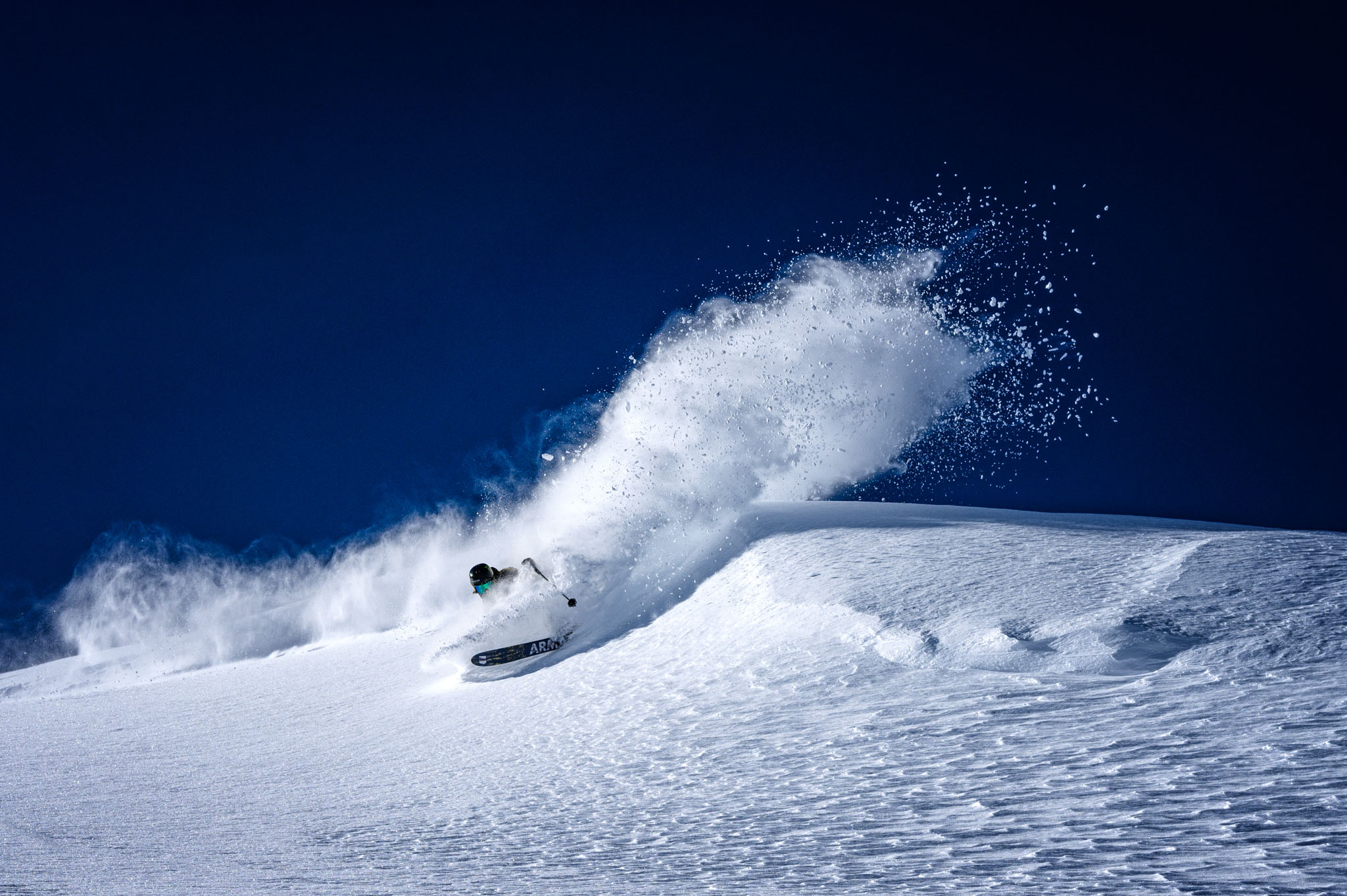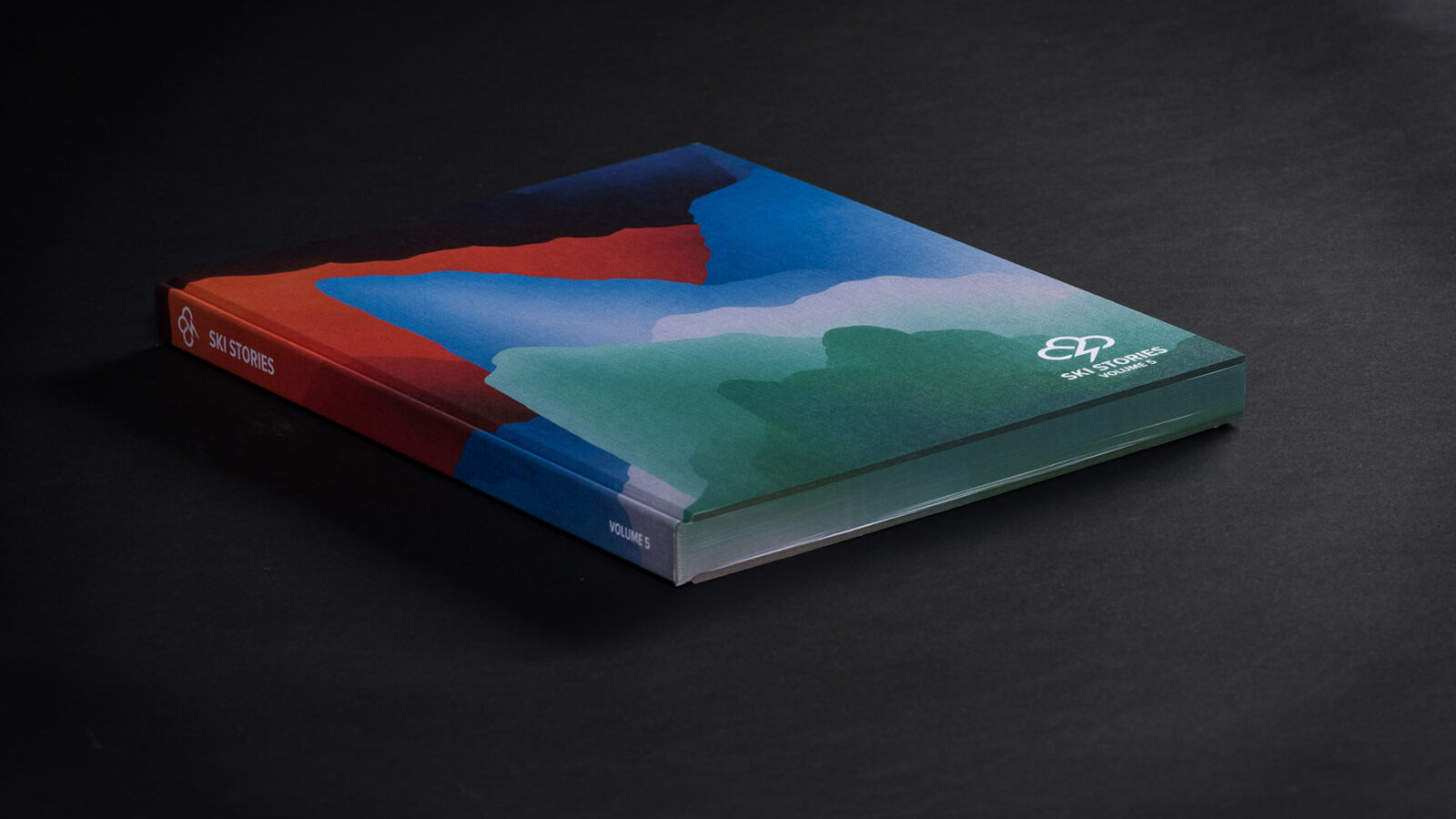Stories
HighlightBe Inspired: The Interview
Already in cahoots with Iberg since the debut of Inspired Media Concepts in 2010, B&E’s new project is their most ambitious yet: A film called BE Inspired that puts the cinematic spotlight on Henrik and Phil alone. Packed with incredible action from two years of hard work, the film is a fitting culmination of the Iberg canon, an effort that will influence and inspire skiers for years to come.
How did you guys decide to start working on a two-year project?
Eric Iberg: We were on a film tour for two months around North America and were talking about what’s next. Phil and Henrik wanted to make a lm and they asked me to direct it. I said “Awesome, thanks,” and then said that this is the last lm that I’m going to do after doing this for 18 years. So I said, “Let’s do it” — let’s go out with a bang and make the illest shit ever.
Henrik Harlaut: Every day we had a three- to eight-hour drive and we would talk about what we could do with a new movie, a two-year project. After a lot of talk, we decided that it was time to make something ill happen in skiing again. Iberg is a good friend and partner that we’ve been working with on a lot of things, so it was natural. We’ve always looked up to all his movies in the past and in my opinion he’s the greatest lm producer and director in the industry. It’s an honor to have the opportunity to work with him.
Iberg, why will this be your last film?
Eric: I got to the point where it’s like, what else can I do? I checked o all my main goals in ski moviemaking. I’m most proudofthingslikeworkingwiththe Three Phils in the beginning and watch- ing them make Pléhouse Films, and then watching Tanner Hall go o and do his own lms, and then after Idea seeing what Eric Pollard and Nimbus Inde- pendent created. So I look at all that and say, what haven’t I done? Idea and Edu- cation of Style were with a cast of three skiers. I never made a movie with a cast of two skiers, and I never made a movie that was a two-year project. These are super big challenges, especially with just two people, because if someone gets injured, your movie’s fucked. I say it’s my last movie because I’ve done what I wanted to do in skiing. I’m content, I’m stoked, and I just want to go out on top. I think this movie is going to allow me to feel that way.
What were your goals and motivations coming into this project?
Henrik: One of my main motivations was to make a ski movie that’s fun to watch, one that you want to watch over and over again. I’ve been missing that a bit in movies the last couple years.When I was growing up, I would rewind and watch every ski movie I had on VHS until I couldn’t watch them anymore. That hasn’t really happened in the last few years. I wanted to do something that people can relate to—have it be dreamy style with the spectacular tricks, but also something that’s really styleful with our own flavor. Something that people want to watch again and again, before skiing and after skiing and in between skiing!
Phil: We want people to relate to it. We added a park segment that has no exclusive features, just the early season Mammoth park. I think that’s a great piece to add because for most people, that’s what they’re going to relate to. People don’t really feel anything if they can’t relate to what they see. When you see a trick being done on a tube that everyone can hit, then the next day you can be like, “Yo, I’m gonna try all day to do this trick.” And that’s the goal, to inspire people to go out and try, do their best and progress.

Phil Casabon
Eric: The big point is, the movie without credits is 22 minutes long. That’s one of the things we focused on—the shortness—to get that vibe where it doesn’t get boring. You watch a movie that’s an hour long, and has to be that long because the sponsors pay the companies to put these riders in. And then all of a sudden you’ve got 30 riders in the movie, and then the movie has to be an hour long because they have to get enough product shots in. A ski movie isn’t made to be artistic anymore. My goal with these guys is to make sure that it’s something that kids want to watch. I think Henrik and Phil showed how well rounded they are in freestyle and actual skiing. Everything they do in this movie, you could do it. There are no helicopters involved. It’s all at friends’ houses or out camping. It’s like Idea on a freestyle crack element. You’ll see these guys landing in tracked out runs—there’s one shot where Henrik lands switch and rides through a snowmobile track in the landing. When you watch it, you’re like, that could have blown his knee! But it’s not even about it being a perfect landing. The whole movie is about having fun, and the craziest part is, Phil and Henrik are better than everyone else in my opinion. They have a different view, and it’s wicked. They’re not trying to get that pristine shot with that pristine camera in a fake-like situation, which is pretty much what all the movies that we watch these days are. Who can relate to a huge park shoot that costs eighty thousand dollars? Who can relate to Alaska? Who can relate to all these things? That’s not what got me into filmmaking. So it’s fun to bring it back to the basics.
The musical element is obviously a big part of what you do.Why is that important to you?
Henrik: It’s basically everything, because it’s what makes the feeling for the whole edit or segment. The greatest part about it being original is that you don’t have a preconceived picture beforehand. Watching ski movies when I was young, we didn’t have Internet so I didn’t really listen to much music that wasn’t on the radio. When I saw a ski movie, the music was like an original soundtrack to me at the time. These days it’s so easy and so accessible with all the music around, so it’s amazing to have an original soundtrack where you don’t already have an impression of the music before you watch the movie.
Phil: Like Henrik said, the soundtrack to my life has basically come from the ski movies that I’ve watched in the past. All the shit that I listen to now sprouted from the ski movies that I watched. It’s fun to be able to give that to a kid. The artists on the soundtrack have an insane amount of music out, so kids can be introduced to these new artists and go and listen to their music. From an editors’ standpoint, you get excited when you have a hype song. When you’re editing to it, you get this feeling, you get the chills. If you don’t get that while you’re editing—if you’re not having fun and listening to something that you like—then it will show in the edit. But if the shit is banging, it’s definitely going to reverberate in the edit.

Phil Casabon, Photo: Dan Villaire
Iberg, what’s it like to produce a soundtrack in addition to directing the movie?
Iberg: The process is wicked. I’ve done a couple of soundtracks before, for Idea, Like A Lion, Retallack, Let It Flow and a bunch of Inspired TV shows when we were into that. This one is pretty unique because I got to work with a guy named Walshy Fire of a music group called Major Lazer, which kind of happened to become the world’s largest group last summer with a song called Lean On. They were the first people to go over a billion views on Youtube and they’ve gone quadruple platinum in most countries around the world in the last eight months. I knew him from a dance hall era when he was with a different group called Black Chiney, and he made a mixtape for Cali P in like 2009. We were randomly reintroduced last February. We talked for a month or two, and then in April I said, “I’ve got these two awesome skiers, do you want to be the producer of my soundtrack?” It was funny because it was right before they really blew up, and it was interesting how that all worked out. For this soundtrack I wanted to hand-select reggae dancehall artists and put them with a hip-hop artist. I went through thousands of beats with Walshy Fire and we picked out beats for each segment. From there, we thought about which artist we wanted to put on, whether a rapper or a dance hall artist. You hear their voice and then you think, well, who’d be awesome with this guy? So the process was very long for each tune. It was beyond awesome, beyond crazy. I got to make some of my favorite songs with my favorite artists, and that all happened because of a ski movie. That was probably the coolest experience about this movie for me personally.
Is there an album coming out as well?
Eric: Yes. The album is the BE Inspired Original Motion Picture Soundtrack. It’s out under Walshy Fire’s label, Walshy Fire Presents, on all digital platforms. There’s also a physical release on CD and vinyl.

Henrik Harlaut, Photo: Sophie Sjöberg, Spot: B&E Invitational/Les Arcs, France
How did you manage the filming? Was it difficult to organize, between injuries and competitions and other events? Iberg, do you still get behind the camera?
Eric: I don’t film anymore, I just sit on the phone and the computer and try to make dreams happen. Brady Perron was the main man, and there were a couple more people that these guys can tell you about.
Phil: The first year when Henrik and I weren’t together I shot with a Quebec homie that I know well, Vince RC who I filmed Keynote Skier with. There was also Emil Granöö, who Henrik and I have filmed with every year since 2012.
Henrik: It started out a little rough for me. The first year I didn’t get nearly as many clips as I have any other year—for filming it was unfortunately one of the worst seasons I’ve had. But it gave me a lot of time to think about what I wanted to do for the coming season. Phil was healthy for the first season, so I got to see how far he had progressed and stepped up and pushed his skiing. That motivated me and got me so inspired to really put all my effort and energy into it.
Contests are pretty easy, you just go and compete when you have to—you just do your best run whenever it’s time to do your run. But the rest of the season went into only this movie. We didn’t even put out any edits or anything. It was just 100 percent, let’s make the illest movie we possibly can.
Was it weird to button up for two years and not put out regular edits?
Phil: For sure. Sometimes I felt the itch to have something come out, especially being hurt in the second year and having all the rst-year footage seem so old to me. I’ve probably edited my footage twenty times in twenty different ways now, everything seems so damn redundant and irrelevant. So it’s definitely hard in that aspect, when you can’t come out with something straight after you get the clips. In retrospect, I definitely prefer to release shit faster. But it all has its time. At the same time I’m completely happy with how this all went down. Yet, to be relevant and release stuff is much easier and natural than to hold on to footage for a while.
Eric: That’s what everyone wants in this industry. It’s not like these kids’ sponsors are saying, “Woo hoo, thanks for not being relevant.” So it’s as much to blame on the people that pay these guys’ bills, as the feelings that they have. Also, the Instagrams and all this stuff —pretty much every sponsor would pay these kids more money if they did a 15-second Instagram every day and hashtagged their sponsors. To actually want to make movies, but not have the industry care about movies anymore, is a pretty big deal. So that’s why it’s so sweet that I got to do this with them.
Henrik: I like holding on to the footage because that definitely sparked my motivation. When I went to contests, I wanted to do really well so people would realize, “Shit, he’s on to something.” I wanted to show at X Games and at the B&E Invitational and everything else that I’m skiing better than I’ve ever been skiing, but there’s a reason why you haven’t seen a lot of footage.

Henrik Harlaut, Photo: Brady Perron, Spot: Chicoutimi, Canada
You all have worked together for a long time, how did you come together and continue working together?
Eric: Henrik was this kid who emailed me in 2003 or something and asked me if he could be in my movies. This was through Hotmail, right? We kept in touch, met up later, figured out how to get him on Armada, and we didn’t make a movie together until a decade later. Whenever paths are supposed to cross in life, everything happens. It was almost the same with Phil. I first saw him at the Orage Masters, and he was basically the only kid that got a free pair of Armada skis other than the original five, six guys. I got to meet him in that situation and be like, “Who is this guy that JP Auclair just put on?” It was a pleasure to finally start to work with them when Inspired started, and to be able to evolve it over the past six years to be able to create this project. That relationship took sixteen years to build and develop, and then dominate. That’s been pretty awesome and a privilege.
Phil: There’s a reason why we all gravitated towards each other, because we have similar mindsets on our approach to life in general. It’s so easy to make stuff happen together. These two guys make dreams happen. They are people of action, motivated and dedicated, and once they speak about something, they take the measures to make it happen. Being here with those guys is a blessing, because it’s much easier to make stuff happen when you have other people who are incredibly focused and motivated in their fields of life. Our crew has an incredible synergy. It’s a blessing to have worked together.
Henrik: I think everything has basically been said. Since I was young it was one of my biggest dreams to be in one of Eric’s movies, and becoming good friends with him and working with him, and then meeting Phil, naturally becoming really good friends, everything fit together. Bonding with music, with who our favorite skiers are, our other favorite sports—we have a lot of things in common. It worked out very well for every reason.

Henrik Harlaut, Photo: David Malacrida
How do you guys think Iberg has influenced ski films?
Phil: He basically changed it all, in my opinion. His approach to his movies was exactly on point with my perspective of how it should be. To be able to wrap it all up with him seems like the most right thing that could possibly happen. None of his movies are the same— there’s always a different concept, different music and a different approach that hadn’t really been seen before.
Henrik: That was very well summed up. I’m very thankful that I had the opportunity to do two movies with Iberg. He definitely influenced my life and my path in skiing, and I’m very thankful and blessed and insanely happy with the outcome of this movie.
Eric: Thanks guys. I’ve got to say something else though: these guys edited the whole movie on their own. Imagine a 15-inch laptop with no mouse, just a trackpad, and only editing on a three- inch screen in the corner. I’ve never seen that before, no one will ever see that, and it’s the most amazing thing I’ve ever seen. So anyone who thinks they need nice cameras and nice computers to make movies—that’s a joke. Big up to these guys. To watch this whole editing process get done on a laptop was unreal. That’s what made it fun for me as a director, always having different situations in the editing process and the production. This one was very unique and different from all the other movies I’ve ever made.
Go check out the full movie here.

